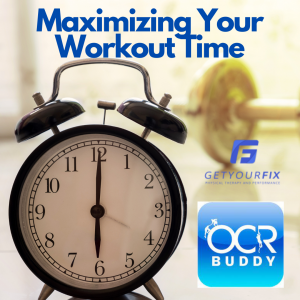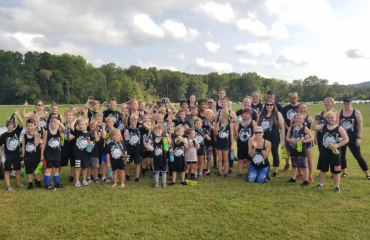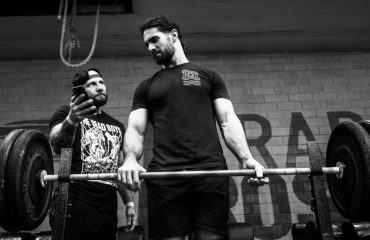 We often think we need to be training for hours a day in order to meet our goals. To some extent, that may be accurate, but many times that is not the case.
We often think we need to be training for hours a day in order to meet our goals. To some extent, that may be accurate, but many times that is not the case.
If you are training for a marathon or longer endurance event, yes, you need to be training longer at times so your body is used to working for 4, 8, or 12+ hours. But if you are training for an event that will last 2 hours or less, you likely don’t need to be putting in 2-3 hour training sessions on a regular basis.
It comes down to what I call Training Efficiently.
When you train efficiently, you maximize your time used when training. You can truly cover everything you need in a training session in 1 hour rather than 2-3 hours if you are doing things in a more efficient manner.
What does training efficiently mean to me? It means doing activities that involve full-body movements, using equipment that challenges your stability and control, and using multiple energy systems in the body with your training program. It also means training under fatigue conditions at times.
Full Body Movements
Yes, isolated strength work is important and there is a time and a place for it in your training, so we don’t want to completely disregard that. But, using full-body movements can work your body in a more functional manner, which prepares you more for life and racing, and also saves you time.
In daily life and in OCR events, we are rarely doing isolated movements. Think about how you do simple tasks at home, such as unloading a dishwasher or putting laundry away. Most likely you are doing some sort of bend and rotation and then a rotation with a reach. Your body is moving as a full unit. You likely don’t break it into these separate parts: 1) bend down, 2) stand up, 3) pivot, 4) reach overhead, 5) reverse movement and repeat. That is inefficient and unnatural. Now think about the different things you do during an OCR event? Are there many times where you are doing one isolated movement during any of the obstacles? Not really!
So why not train the body to move as a full unit. We can do this both with fast movements and slow movements. If you want to train speed, things such as burpees and Devil’s Press are great movements. If you want to focus more on strength, slower movements such as Turkish Get Ups or any form of rotational lifts are great options.
Stability And Control
The more we can challenge our bodies dynamically during a training session, the more work we feel happen in a shorter amount of time. Think about this example: when you perform an overhead press with a barbell vs. dumbbell vs. kettlebell with the bell resting on arm vs. kettlebell in bottoms up position, how do they compare? Can you press as much total weight with dumbbells compared to a barbell? Most likely not. How about a kettlebell in a bottoms up position? Significantly less! That’s because you are not only working the large muscles, you are also requiring the smaller, underlying, stability muscles to kick in more as you are changing the equipment.
The more you challenge yourself with equipment that requires more control and stability, the more efficient your workout will be.
Multiple Energy Systems
Without getting too technical, this means doing a combination of workout types – some workouts that are high endurance and long chippers, some workouts that are short, sprint-type intervals, and everything in between.
If you are constantly doing the same type of workouts, you are only challenging one, maybe two, systems. By mixing things up and challenging more systems, you are better preparing yourself for all the elements of racing.
Training Under Fatigue
When you are lifting at the gym, how much rest are you giving yourself? Are you waiting until you feel fully recovered before doing another set or a different movement? That is not a bad thing if your session is strictly for strength, which as I stated earlier is an important element and necessary to do. But, if that is how every gym session is, you are doing yourself a disservice.
Think about when you race. You are running and then come up on an obstacle. At times, you may have to wait for a short time, but most likely you aren’t waiting until you are fully recovered before you do the obstacle. It is important to train they way you race at times.
You can do this in a number of ways. For example, you can do circuits or supersets, in which you are doing several different movements and going directly from one right to the other. Or you can do a more cardio based workout, mixing running, burpees, or box jumps with other strength or body weight movements. The possibilities are essentially endless!
Written by Brianne Showman. Brianne is a physical therapist and running coach with Get Your Fix Physical Therapy And Performance. Her focus is on helping athletes resolve injuries in less time by getting to the root of the problem, improving movement patterns, and incorporating proper training to help the body to move more efficiently, more powerfully, and in less injury-prone ways.









